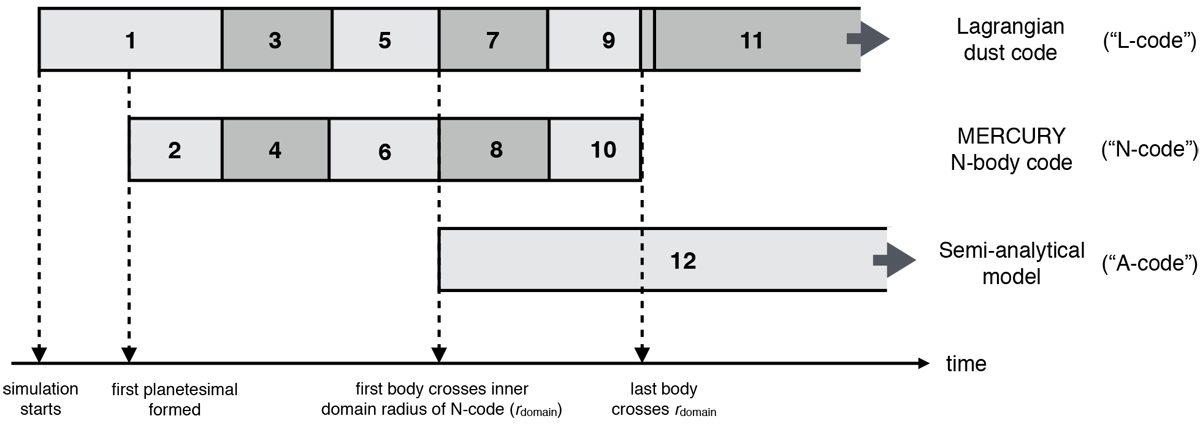Fig. 3

Sketch of the code coupling. The code runs in blocks, starting at block 1. For illustration purposes the total number of blocks is 12 in this sketch; in reality, there are many more blocks in one simulation. After some planetesimals have formed during the first run of the Lagrangian dust evolution code (top row), we switch to the N-body code and inject the formed planetesimals (middle row). After a fixed time interval we switch back to the Lagrangian dust code and update the value for the pebble accretion efficiency as was output by the N-body code. This “zig-zag” behaviour continues until all planetesimals have left the N-body code, either because they have been accreted by bigger objects, or because they have grown into bigger objects and have migrated across the inner radius of the N-body domain rdomain (see text formore details). The final stage of our calculation concerns the growth of the protoplanets that have crossed rdomain, and is discussed in Sect. 2.5.
Current usage metrics show cumulative count of Article Views (full-text article views including HTML views, PDF and ePub downloads, according to the available data) and Abstracts Views on Vision4Press platform.
Data correspond to usage on the plateform after 2015. The current usage metrics is available 48-96 hours after online publication and is updated daily on week days.
Initial download of the metrics may take a while.


